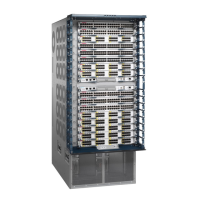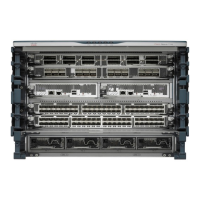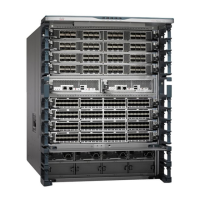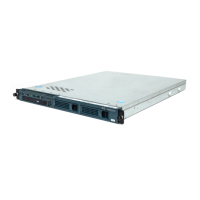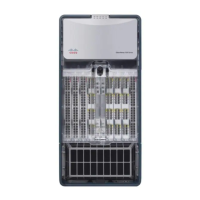Maintenance 5-177
Installing and Configuring Processor Modules
In the following example, the software configuration register is set to boot the router from Flash
memory and to ignore Break at the next reboot of the router:
Router# conf term
Enter configuration commands, one per line. End with CTRL/Z.
config-register 0x102
boot system flash [filename]
^z
Router#
The server creates a default boot filename as part of the automatic configuration processes. To form
the boot filename, the server starts with the name cisco and adds the octal equivalent of the boot field
number, a hyphen, and the processor-type name. Table 5-6 lists the default boot filenames or actions
for the processor.
Note A boot system configuration command in the router configuration in NVRAM overrides the
default netboot filename.
Table 5-6 Default Boot Filenames
Bit 8 controls the console Break key. Setting bit 8 (the factory default) causes the processor to ignore
the console Break key. Clearing bit 8 causes the processor to interpret the Break key as a command
to force the system into the bootstrap monitor, thereby halting normal operation. A break can be sent
in the first 60 seconds while the system reboots, regardless of the configuration settings.
Bit 9 controls the secondary bootstrap program function. Setting bit 9 causes the system to use the
secondary bootstrap; clearing bit 9 causes the system to ignore the secondary bootstrap. The
secondary bootstrap program is used for system debugging and diagnostics.
Action/File Name Bit 3 Bit 2 Bit 1 Bit 0
Bootstrap mode 0000
ROM software 0001
cisco2-rp1 0010
cisco3-rp1 0011
cisco4-rp1 0100
cisco5-rp1 0101
cisco6-rp1 0110
cisco7-rp1 0111
cisco10-rp1 1000
cisco11-rp1 1001
cisco12-rp1 1010
cisco13-rp1 1011
cisco14-rp1 1100
cisco15-rp1 1101
cisco16-rp1 1110
cisco17-rp1 1111

